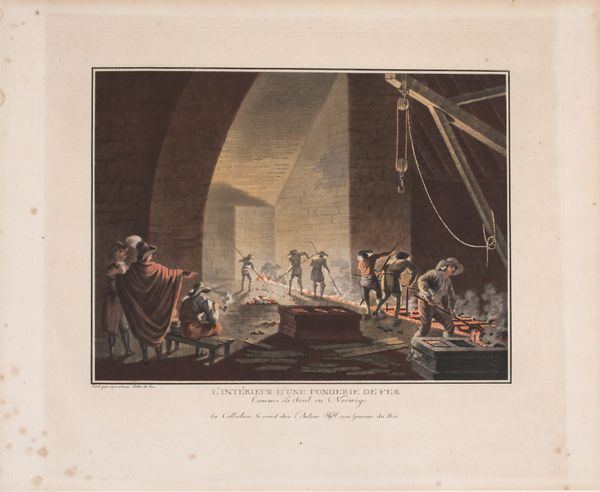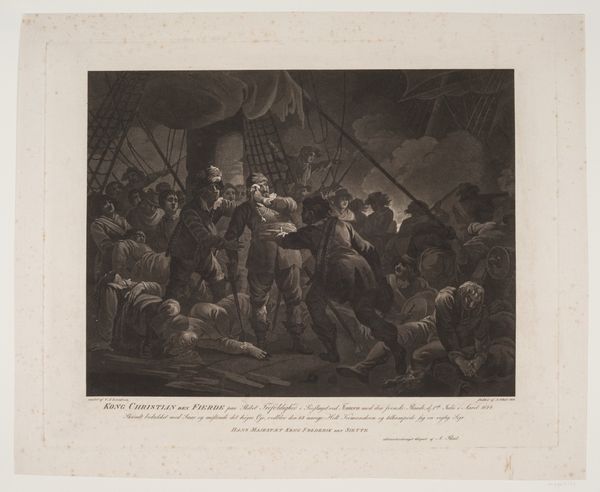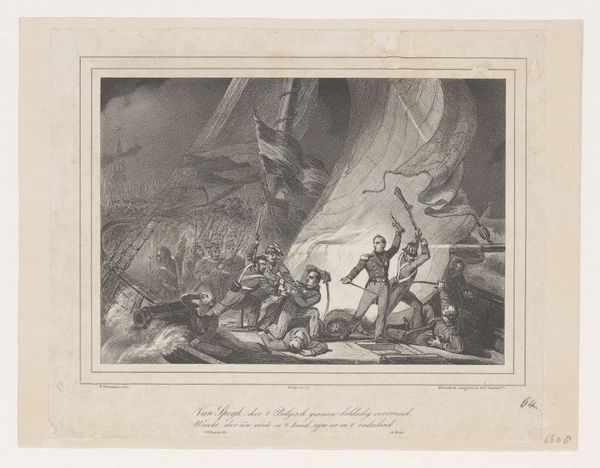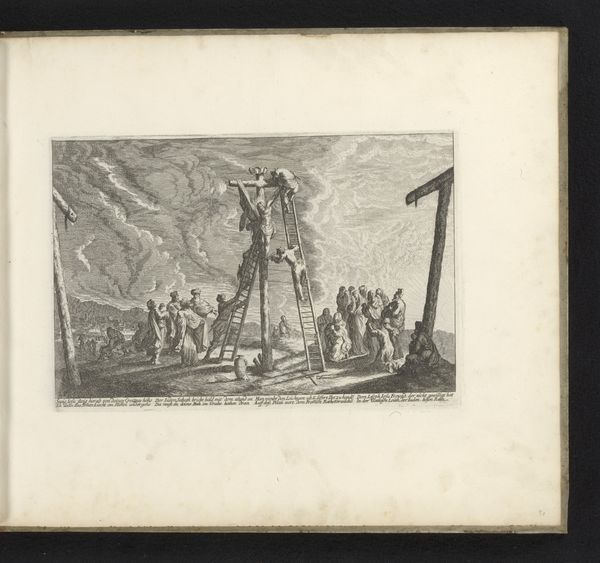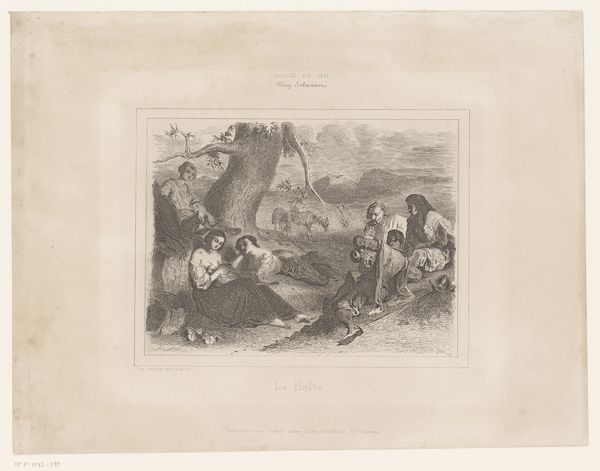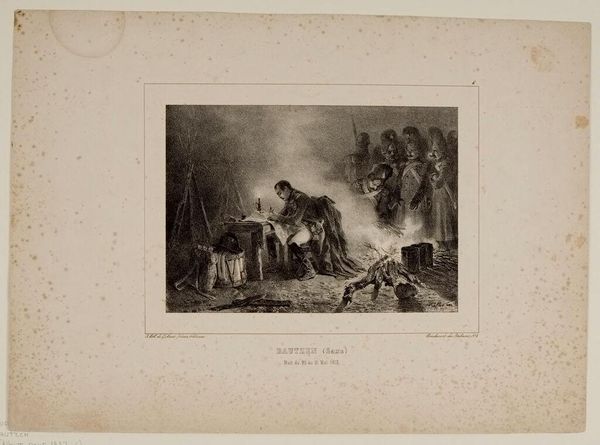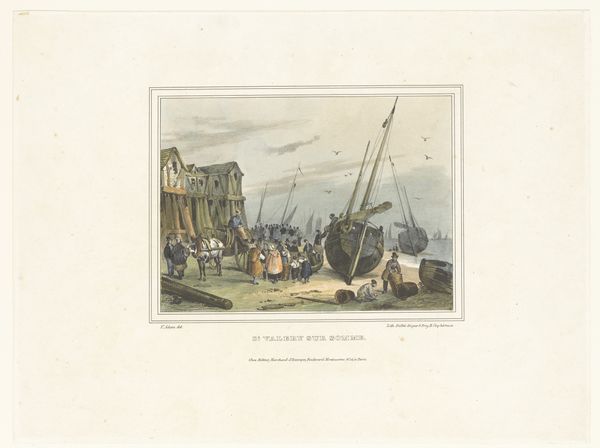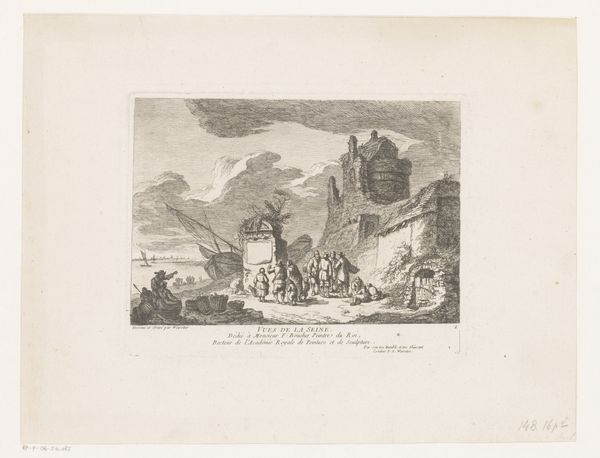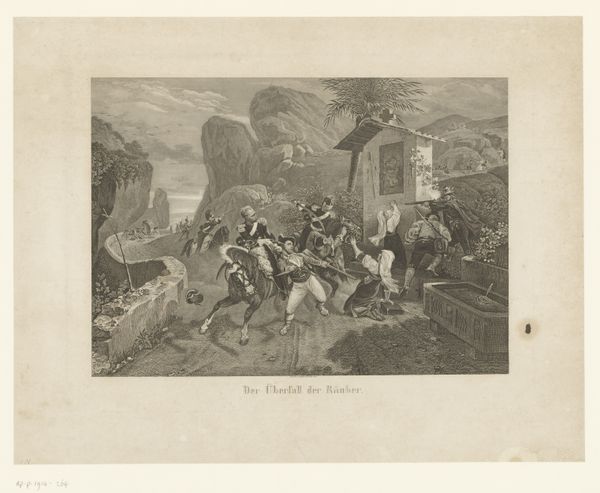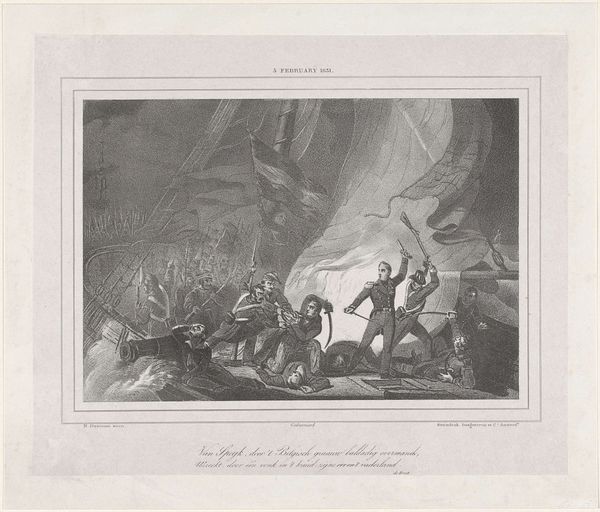
aquatint, print, etching, engraving
#
aquatint
#
neoclacissism
# print
#
etching
#
genre-painting
#
history-painting
#
engraving
Dimensions: 517 mm (height) x 649 mm (width) (bladmaal)
Curator: Look at this intriguing image! This is "L'Interieur d'une fonderie de fer" dating from the 1790s by Georg Haas. The mediums listed include aquatint, etching, and engraving, held here at the SMK, the Statens Museum for Kunst. Editor: The first impression is striking – almost theatrical. A deep, shadowed space pierced by this intense light. Makes me think of a stage setting...grim, but dynamic. Curator: Absolutely. Haas masterfully contrasts the luminous heart of the foundry with the surrounding gloom. Notice the figures; some seem caught in almost classical poses while others actively toil. It feels both timeless and brutally industrial. Editor: It speaks to the tension of its time, doesn't it? This push and pull between the old order and the burgeoning industrial revolution. You've got those figures on the left, observing in what looks like noble garb and then the sheer labor taking place. Are they implicated, complicit observers of the commoner's suffering or just another curious eye to see the work? Curator: It's a question the work doesn't quite resolve, leaving us to ponder the social hierarchy embedded within. Also, consider how industrial scenes during this period were often romanticized. Here, while there's drama, Haas doesn't shy away from depicting the intense labor. But there are elements from Neoclassicism, the strong sense of line, and the emphasis on balanced composition, that provide some sense of, at the very least, trying to depict things in a new light. Editor: I also read the light as a metaphor. Illumination brought by industry, but cast with deep shadows of its consequences. And it asks you, as the viewer, to also examine your place in that production. Where do you stand in that illumination? Are you complicit? Are you just there to watch? It resonates so profoundly even now! Curator: I agree. The questions this print raises about progress, labor, and the observer's role make it more than just a historical record, I wonder, can it still resonate in an age when the meaning of work has shifted again. Editor: Precisely. It’s an invitation to critically examine the narratives we construct around progress and to remain vigilant about whose stories get told. Curator: I guess, in the end, Haas has left us with plenty to chew on. It's art that keeps on giving if you allow yourself to linger.
Comments
No comments
Be the first to comment and join the conversation on the ultimate creative platform.
